To accomplish my objectives which is to keep the nutritional plane 100% 365 days a year plots are essential. Sure with the timber mgt. we do the deer herd would be ok. But I'm not interested in ok.Beyond that plots add diversity , interest and beauty to the property.They also make the overall hunting experience better as well as improve year round wildlife observation I'm in the process of opening up more of our property now for the value it adds.
-
If you are posting pictures, and they aren't posting in the correct orientation, please flush your browser cache and try again.
Edge
Safari/iOS
Chrome
You are using an out of date browser. It may not display this or other websites correctly.
You should upgrade or use an alternative browser.
You should upgrade or use an alternative browser.
How do your plots affect the "Huntability" of your property?
- Thread starter BenA
- Start date
Native Hunter
5 year old buck +
My deer have to go through the persimmons, chestnuts, apples, crabapples, acorns and everything else before they get to the food plot. But they seem to like it once they finally get there.
bigboreblr
5 year old buck +
I tedn to think food plots make deer a bit lazy. They dont need to move around as much for food. IT can also ruin a hunt if they want to stay right in the area too, if you hunt near them.
Folks in alot of places can really benefit by providing a steady year round water supply. In some areas, I think putting in a pump and well might be money better spent than a tractor. Although it doesnt need to cost as much as one. Check out spike wells.
A friend of mine has some hunting land near AG in Kansas. All he does is mow / lightly maintain fallow fields, some light tree work to provide better cover, like hinge cutting, and having a good and another so-so supplemental water source. Day n night.......
Folks in alot of places can really benefit by providing a steady year round water supply. In some areas, I think putting in a pump and well might be money better spent than a tractor. Although it doesnt need to cost as much as one. Check out spike wells.
A friend of mine has some hunting land near AG in Kansas. All he does is mow / lightly maintain fallow fields, some light tree work to provide better cover, like hinge cutting, and having a good and another so-so supplemental water source. Day n night.......
Native Hunter
5 year old buck +
I agree on them getting lazy. I think that’s why most of my deer have big fat asses.I tedn to think food plots make deer a bit lazy. They dont need to move around as much for food. IT can also ruin a hunt if they want to stay right in the area too, if you hunt near them.
Folks in alot of places can really benefit by providing a steady year round water supply. In some areas, I think putting in a pump and well might be money better spent than a tractor. Although it doesnt need to cost as much as one. Check out spike wells.
A friend of mine has some hunting land near AG in Kansas. All he does is mow / lightly maintain fallow fields, some light tree work to provide better cover, like hinge cutting, and having a good and another so-so supplemental water source. Day n night.......
Foggy47
5 year old buck +
When I bought my property....a timber company owned it as a red pine plantation. They had high-graded the red pines a year or two prior to my purchase. Still....it had ALLOT of pine trees that were nearing maturity in a few years. Most of the locals would hunt these properties as "public land" tho the locals said it was near impossible to hunt this land as you could not see your hand in front of your face....except for a few small pockets in the pines. It was largely devoid of any food and there was not much wildlife using this land. Almost eerie as there were no squirrels or song birds or grouse. Just a big mature pine forest. It was pretty.
When I bought it....you could not get to some areas on the property due to a tangle of blow down and some trees dozed into piles....which prevented acesss. Stumps were everywhere....and riding a wheeler from one end to the other was almost impossible.
I was able to clean up a few small areas to create some openings for a few deer stands......and that was the way it was for a year or two. Slowly I made new trails and cleared debris to gain access thru the property. Found a few openings and improved on them and planted a few small plots with primarily 4 wheeler equipment. Hard work. Ground out a few hundred stumps with a rental 25 HP stump grinder....and more trails and food plots came to be.
Then I made a monumental decision to purchase a tractor and "get with it". Life was never the same. I have ground out over 3009 stumps (maybe 4000 but I quit counting) and develpoed food plots and limed and fertilized the lands I gleaned from the pine forest. This would be near impossible without the tractor, grapple, stump grinder and machinery I own.....as well as LOGGING THE PLACE....which provided the fastest improvements.....and paid for several upgrades to boot.
It takes some time to develop ideas about building your "utopia" deer land.....but with time and determination it can happen. I'm happy to be where I am in this process. My place may never provide the best trophy opportunities due to the harsh winters and high population and hunter density in the lake area. But I like what I got and enjoy working on the place and realizing the benefits of my hard work. keeps me off the street. grin.
When I bought it....you could not get to some areas on the property due to a tangle of blow down and some trees dozed into piles....which prevented acesss. Stumps were everywhere....and riding a wheeler from one end to the other was almost impossible.
I was able to clean up a few small areas to create some openings for a few deer stands......and that was the way it was for a year or two. Slowly I made new trails and cleared debris to gain access thru the property. Found a few openings and improved on them and planted a few small plots with primarily 4 wheeler equipment. Hard work. Ground out a few hundred stumps with a rental 25 HP stump grinder....and more trails and food plots came to be.
Then I made a monumental decision to purchase a tractor and "get with it". Life was never the same. I have ground out over 3009 stumps (maybe 4000 but I quit counting) and develpoed food plots and limed and fertilized the lands I gleaned from the pine forest. This would be near impossible without the tractor, grapple, stump grinder and machinery I own.....as well as LOGGING THE PLACE....which provided the fastest improvements.....and paid for several upgrades to boot.
It takes some time to develop ideas about building your "utopia" deer land.....but with time and determination it can happen. I'm happy to be where I am in this process. My place may never provide the best trophy opportunities due to the harsh winters and high population and hunter density in the lake area. But I like what I got and enjoy working on the place and realizing the benefits of my hard work. keeps me off the street. grin.
Thanks for sharing Foggy. I'm excited to start my journey soon on my own piece of heaven.When I bought my property....a timber company owned it as a red pine plantation. They had high-graded the red pines a year or two prior to my purchase. Still....it had ALLOT of pine trees that were nearing maturity in a few years. Most of the locals would hunt these properties as "public land" tho the locals said it was near impossible to hunt this land as you could not see your hand in front of your face....except for a few small pockets in the pines. It was largely devoid of any food and there was not much wildlife using this land. Almost eerie as there were no squirrels or song birds or grouse. Just a big mature pine forest. It was pretty.
When I bought it....you could not get to some areas on the property due to a tangle of blow down and some trees dozed into piles....which prevented acesss. Stumps were everywhere....and riding a wheeler from one end to the other was almost impossible.
I was able to clean up a few small areas to create some openings for a few deer stands......and that was the way it was for a year or two. Slowly I made new trails and cleared debris to gain access thru the property. Found a few openings and improved on them and planted a few small plots with primarily 4 wheeler equipment. Hard work. Ground out a few hundred stumps with a rental 25 HP stump grinder....and more trails and food plots came to be.
Then I made a monumental decision to purchase a tractor and "get with it". Life was never the same. I have ground out over 3009 stumps (maybe 4000 but I quit counting) and develpoed food plots and limed and fertilized the lands I gleaned from the pine forest. This would be near impossible without the tractor, grapple, stump grinder and machinery I own.....as well as LOGGING THE PLACE....which provided the fastest improvements.....and paid for several upgrades to boot.
It takes some time to develop ideas about building your "utopia" deer land.....but with time and determination it can happen. I'm happy to be where I am in this process. My place may never provide the best trophy opportunities due to the harsh winters and high population and hunter density in the lake area. But I like what I got and enjoy working on the place and realizing the benefits of my hard work. keeps me off the street. grin.
TreeDaddy
5 year old buck +
^^^^^^^^ therapeuticWhen I bought my property....a timber company owned it as a red pine plantation. They had high-graded the red pines a year or two prior to my purchase. Still....it had ALLOT of pine trees that were nearing maturity in a few years. Most of the locals would hunt these properties as "public land" tho the locals said it was near impossible to hunt this land as you could not see your hand in front of your face....except for a few small pockets in the pines. It was largely devoid of any food and there was not much wildlife using this land. Almost eerie as there were no squirrels or song birds or grouse. Just a big mature pine forest. It was pretty.
When I bought it....you could not get to some areas on the property due to a tangle of blow down and some trees dozed into piles....which prevented acesss. Stumps were everywhere....and riding a wheeler from one end to the other was almost impossible.
I was able to clean up a few small areas to create some openings for a few deer stands......and that was the way it was for a year or two. Slowly I made new trails and cleared debris to gain access thru the property. Found a few openings and improved on them and planted a few small plots with primarily 4 wheeler equipment. Hard work. Ground out a few hundred stumps with a rental 25 HP stump grinder....and more trails and food plots came to be.
Then I made a monumental decision to purchase a tractor and "get with it". Life was never the same. I have ground out over 3009 stumps (maybe 4000 but I quit counting) and develpoed food plots and limed and fertilized the lands I gleaned from the pine forest. This would be near impossible without the tractor, grapple, stump grinder and machinery I own.....as well as LOGGING THE PLACE....which provided the fastest improvements.....and paid for several upgrades to boot.
It takes some time to develop ideas about building your "utopia" deer land.....but with time and determination it can happen. I'm happy to be where I am in this process. My place may never provide the best trophy opportunities due to the harsh winters and high population and hunter density in the lake area. But I like what I got and enjoy working on the place and realizing the benefits of my hard work. keeps me off the street. grin.
bill
When we first bought our property, It had about 1.25 acres of plot on a total of 90 acres. First two years, our oaks produced fantastic mast and there was no competing. Last year, no acorns. Few deer. They were on adjacent pieces that had plots.
This year, I focused primarily on opening up some of the canopy in the mature areas of the woods to thicken things up for good bedding and additional browse. I did make one small kill plot but that was a relatively small part of it. I think we'll have better acorns this year so its' more about giving them reasons to stay on our property regardless.
This year, I focused primarily on opening up some of the canopy in the mature areas of the woods to thicken things up for good bedding and additional browse. I did make one small kill plot but that was a relatively small part of it. I think we'll have better acorns this year so its' more about giving them reasons to stay on our property regardless.
Someday isle
5 year old buck +
When I bought my property in 2016 we had a group of four does who only occasionally showed up on camera. They were mostly passing through. That first year we put in some food plot trails in the fall on some old logging roads. Over the last five years we’ve expanded our plots and have five stands on our 35 acres. our logging road trails are in clover and we have three small harvest plots. In total we have a little over an acre and a half or so of plots. We now have 8-12 regular deer on camera every year. They’re mostly does, fawns, and young bucks but it meets out goals. We see enough nice bucks and have harvested a couple along with plenty of meat in the freezer. It’s good enough for us. We have a small property surrounded by other small properties. We’ve done some work creating better cover and added a couple water holes too but it’s the food that brings the deer in during the season. There’s no agriculture in our area so it’s our food plots that have Had the biggest impact for us.
Bassattackr
5 year old buck +
Tree Spud
5 year old buck +
I disagree with the concept "destination Plot". It is simply a made up mktg term to push simplistic concept by the deer builder/BOB seed group.
In over 25 years of observing deer behavior, there are 3 distinct traits I have observed. First, deer want secure low pressure areas to bed. This is why we create sanctuaries. Second, deer when they are up, are on the move. Third, deer are constantly browsing and need a varied diet. Watching deer feed seems to be on a 2-3 day rotation. I will see deer on day one in the plots, and sometimes they return back through the same day to bed, but often times they will rotate from my property to other and do that cycle over 2-3 days.
Our property has lots of browse and tremendous bedding cover. It can sustain deer groups without food plots. I primarily plant the plots to slow down movement knowing that the deer will only spend short periods in these plots. I have multiple small 1 acre plots on travel corridors leading out of bedding areas and then larger plots 4-6 acres away from the bedding areas. The goal being to slow down movement as i know they will be traveling to the neighboring properties. By spreading plots out there are opportunities to ambush on the travel corridors.
Food plots have certainly added additional forage for deer, and spring food sources help the deer recover faster from the winter, but not every property will benefit from food plots. Some smaller properties see too much disruption by the planting of plots or over hunting one area of the property.
In over 25 years of observing deer behavior, there are 3 distinct traits I have observed. First, deer want secure low pressure areas to bed. This is why we create sanctuaries. Second, deer when they are up, are on the move. Third, deer are constantly browsing and need a varied diet. Watching deer feed seems to be on a 2-3 day rotation. I will see deer on day one in the plots, and sometimes they return back through the same day to bed, but often times they will rotate from my property to other and do that cycle over 2-3 days.
Our property has lots of browse and tremendous bedding cover. It can sustain deer groups without food plots. I primarily plant the plots to slow down movement knowing that the deer will only spend short periods in these plots. I have multiple small 1 acre plots on travel corridors leading out of bedding areas and then larger plots 4-6 acres away from the bedding areas. The goal being to slow down movement as i know they will be traveling to the neighboring properties. By spreading plots out there are opportunities to ambush on the travel corridors.
Food plots have certainly added additional forage for deer, and spring food sources help the deer recover faster from the winter, but not every property will benefit from food plots. Some smaller properties see too much disruption by the planting of plots or over hunting one area of the property.
yoderjac
5 year old buck +
I disagree with the concept "destination Plot". It is simply a made up mktg term to push simplistic concept by the deer builder/BOB seed group.
In over 25 years of observing deer behavior, there are 3 distinct traits I have observed. First, deer want secure low pressure areas to bed. This is why we create sanctuaries. Second, deer when they are up, are on the move. Third, deer are constantly browsing and need a varied diet. Watching deer feed seems to be on a 2-3 day rotation. I will see deer on day one in the plots, and sometimes they return back through the same day to bed, but often times they will rotate from my property to other and do that cycle over 2-3 days.
Our property has lots of browse and tremendous bedding cover. It can sustain deer groups without food plots. I primarily plant the plots to slow down movement knowing that the deer will only spend short periods in these plots. I have multiple small 1 acre plots on travel corridors leading out of bedding areas and then larger plots 4-6 acres away from the bedding areas. The goal being to slow down movement as i know they will be traveling to the neighboring properties. By spreading plots out there are opportunities to ambush on the travel corridors.
Food plots have certainly added additional forage for deer, and spring food sources help the deer recover faster from the winter, but not every property will benefit from food plots. Some smaller properties see too much disruption by the planting of plots or over hunting one area of the property.
Here, a "destination plot" is a larger feeding plot. The purpose is to feed deer, not hunt over the plot. These larger multi-acre plots provide food volume. I want them some distance from bedding cover. I have small "kill" plots between bedding and the destination plot. They are smaller and more secluded. Deer will often hit these plots on the way from bedding to feeding ("destination") plots. They don't provide enough food volume for QDM purposes as they are sub-acre plots, often less than .25 ac. They and the trails leading to them are places designed for hunting stands.
I find deer movement is different in the mountains vs rolling vs flat country. I find that in the mountains, deer tend to have much more distinct well traveled trails and there is a definite up to down movement in the evening and a down to up movement in the morning. In rolling country, I find deer tend to meander not taking distinct trails. There can still be bedding to food movement but it is more cover based vs elevation (air current) based.
You are certainly right about small properties. In most cases, cover and minimized pressure are bigger factors than food in designing a more huntable property. You are also right that if you create the right native habitat mix and keep areas in early succession with fire, you can produce a vast amount of quality food. That will get you 90% of the improvement in your herd if done at scale. That last 10%, from a QDM perspective, comes from complementing that native food with quality food during those parts of the year when native fools are seasonally scarce. Most of a deer's diet comes from native foods. It doesn't much matter if a deer eats a high quality native food like pokeweed or the soybeans folks plant.
I've heard the term "destination" plot use for many, many years. It has undoubtedly been coopted by marketers. To my way of thinking it is simply a large field with deer food that gets use mostly well after dark when hunting pressure is present. I think the term "destination" is used to indicate that is where deer end up feeding at night. It needs no fancy BOB seed. Deer don't feel comfortable exposing themselves in the open when hunting pressure is on. Using "kill" plots to feed deer is very inefficient as it requires equipment transport for a tiny amount of work. Large "destination" or "feeding" plots are much more efficient to work as you get multiple acres of food for one transport of equipment.
Thanks,
Jack
Triple C
5 year old buck +
We must be hunting a different sub-species of deer down south. Give me one 5+ acre destination plot for 10 "kill" plots down here. Don't have 25 years of managing my own dirt, but if I had to bet the farm on putting a hunter on multiple killing opportunities for both doe and bucks, I'll put that hunter in my largest destination plot every time over the few kill plots (1/2 acre or less) any day of the week. Kill plot may have 2 to 4 deer, maybe, come in to the plot before dark. Destination plot goona have a dozen to 20 deer in it before dark every day come November and almost always, well before dark. During the chase phase of the rut, nothing brings more buck sightings on my place than a plot full of multiple doe groups.I disagree with the concept "destination Plot". It is simply a made up mktg term to push simplistic concept by the deer builder/BOB seed group.
In over 25 years of observing deer behavior, there are 3 distinct traits I have observed. First, deer want secure low pressure areas to bed. This is why we create sanctuaries. Second, deer when they are up, are on the move. Third, deer are constantly browsing and need a varied diet. Watching deer feed seems to be on a 2-3 day rotation. I will see deer on day one in the plots, and sometimes they return back through the same day to bed, but often times they will rotate from my property to other and do that cycle over 2-3 days.
Our property has lots of browse and tremendous bedding cover. It can sustain deer groups without food plots. I primarily plant the plots to slow down movement knowing that the deer will only spend short periods in these plots. I have multiple small 1 acre plots on travel corridors leading out of bedding areas and then larger plots 4-6 acres away from the bedding areas. The goal being to slow down movement as i know they will be traveling to the neighboring properties. By spreading plots out there are opportunities to ambush on the travel corridors.
Food plots have certainly added additional forage for deer, and spring food sources help the deer recover faster from the winter, but not every property will benefit from food plots. Some smaller properties see too much disruption by the planting of plots or over hunting one area of the property.
Catscratch
5 year old buck +
I hunted this property long before I put plots on it, so to answer the OP it can stand on It's own.
Plots have made it easier to hunt. I put them on the west edge of the property and try to hunt as far from them as possible (sometimes over a mile) to the east, north, or south. This seems to give me the best chances of seeing a buck on his feet in the daylight. I never hunt over the plots.
Plots have made it easier to hunt. I put them on the west edge of the property and try to hunt as far from them as possible (sometimes over a mile) to the east, north, or south. This seems to give me the best chances of seeing a buck on his feet in the daylight. I never hunt over the plots.
Tree Spud
5 year old buck +
We must be hunting a different sub-species of deer down south. Give me one 5+ acre destination plot for 10 "kill" plots down here. Don't have 25 years of managing my own dirt, but if I had to bet the farm on putting a hunter on multiple killing opportunities for both doe and bucks, I'll put that hunter in my largest destination plot every time over the few kill plots (1/2 acre or less) any day of the week. Kill plot may have 2 to 4 deer, maybe, come in to the plot before dark. Destination plot goona have a dozen to 20 deer in it before dark every day come November and almost always, well before dark. During the chase phase of the rut, nothing brings more buck sightings on my place than a plot full of multiple doe groups.
In our DNR hunting unit we have 57 dpsm. My property probably has 75+ dpsm. In my large plots seeing 20-25 deer is common and I have counted up to 45 deer in an afternoon. Lots of does, spikes, and 2-3 year old bucks running around. Seeing deer is easy; however, those are not the deer I am after.
I hunt mature bucks targeting 5 year olds. Those mature bucks almost never show up in daylight in the large plots once the hunting season starts. Pre-rut they move in the twilight, stay in the shadows and like thick cover. During rut they may chase a doe into the large plot but the doe will quickly seek thick cover.
I have found small plots to be especially effective during the pre-rut & rut for bow hunting. I only have a couple of these plots but they are focused near (within 100-150 yards) of bedding areas. Does travel through these on their way to the larger feeding areas and bucks move through these areas scent checking for does. Setting up near these areas and along travel corridors have been my best success areas.
yoderjac
5 year old buck +
We must be hunting a different sub-species of deer down south. Give me one 5+ acre destination plot for 10 "kill" plots down here. Don't have 25 years of managing my own dirt, but if I had to bet the farm on putting a hunter on multiple killing opportunities for both doe and bucks, I'll put that hunter in my largest destination plot every time over the few kill plots (1/2 acre or less) any day of the week. Kill plot may have 2 to 4 deer, maybe, come in to the plot before dark. Destination plot goona have a dozen to 20 deer in it before dark every day come November and almost always, well before dark. During the chase phase of the rut, nothing brings more buck sightings on my place than a plot full of multiple doe groups.
I think most of it has to do with pressure and what is in the plot. The better my habitat, the more deer react to hunting pressure. When I started, deer were forced to come into food plots for quality food when acorn crops were light. Now, there is enough food in cover that it does not take much pressure for them to stay in cover until after dark. Another factor I've found is the structure of what you plant. If I just planted soybeans, deer would wait until much later to enter a plot. If I had a light mix of corn (7:1 by weight) in the beans, they were much more likely to use it during the day. The corn stalks provided more vertical cover.
Another thing to consider is that not all "destination" plots are truly destination plots depending on the habitat. In habitat where bedding cover is more distant and food sources are more concentrated we tend to see more bed-to-food movement. The more distributed and abundant both the food sources and bedding cover are, the less predictable deer movement seems to be.
One thing I've learned is that my habitat improvements have largely benefited our deer herd while at the same time making them harder to hunt. The reason for that is simple. We started with high deer densities and limited food until we began to plant plots. Unless acorns were abundant, they had to hit our plots regardless of size and our first plots were large ones. That is no longer the case. Second, we have limited control over pressure. We don't have a primary objective of shooting big bucks as a group. Our objectives are a balance that includes introducing new folks to hunting as well as recreational hunting opportunities. So, our control over hunting pressure is limited. With limited acreage under our direct control and deer reacting more to hunting pressure with the improved habitat, deer are doing better but hunters are facing new challenges.
Thanks,
Jack
trampledbyturtles
5 year old buck +
Call me crazy. But Im tossing around the idea of replacing my 7a of plots with tree cover. Given I have plenty of grass already and am surrounded on 4 sides by ag. Just feel like cover could be a better bang for the buck.
Plus I'm getting sick of having to deal with the planting/fert/spraying aspect and being limited in equip. Not to mention ever rising input costs.
Plus I'm getting sick of having to deal with the planting/fert/spraying aspect and being limited in equip. Not to mention ever rising input costs.
Telemark
5 year old buck +
At my place in Ontario, any food I add seems to increase the deer activity exponentially. I finally got back after a long covid hiatus, and the activity here is higher than any time I remember previously. The deer are still hammering the stump sprouts from a few years ago, and utilization of native forbs is at least 10x what I have ever seen before. I'm focusing on stump sprouts and wildlife openings this year. I also went to the Agromart and bought some seeds so I could get something in the ground immediately. The bears seem to have annihilated most of my fruit trees, so that will get most of my attention next year.
I will do a little TSI, but the major work I will do for cover will have to wait until I am back on track with my fruit trees and food plots.
I will do a little TSI, but the major work I will do for cover will have to wait until I am back on track with my fruit trees and food plots.
Triple C
5 year old buck +
Destination (3 acres or larger) buck harvests from my farm since 2012:
2012: Grandson’s 1st buck
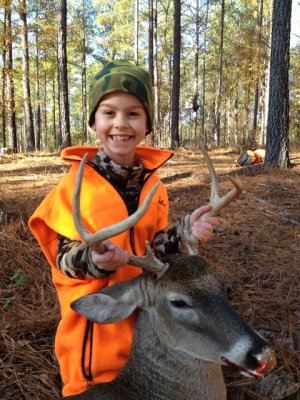
2013: Nephews 1st buck from same plot as grandson’s 1st buck.
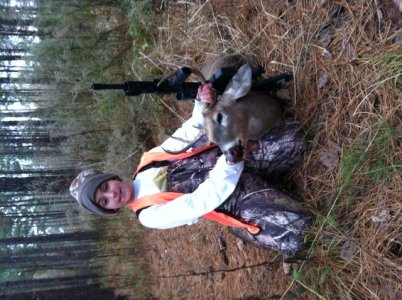
2014: Grandson’s 2nd buck from same plot as previous 2 pics. 4.5 yr old buck chasing doe into plot. I had the blessing of being in the stand with him.

2014: One week later after grandson’s kill, his dad connected in our largest plot in the A.M. Buck came cruising right down middle of plot.
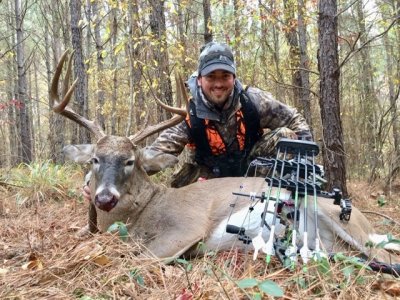
2015: son connects on a late Fecember buck out of same stand that grandson n nephew killed their bucks.
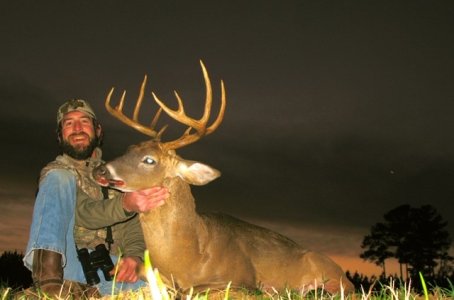
2017: Invited guest given green light to shoot what he wanted. Same plot. Yearling forkie but he was happy.
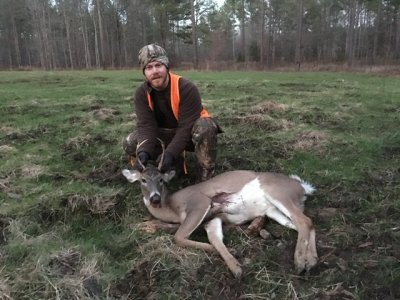
2018: Grandson connects on another buck from our lower plot.
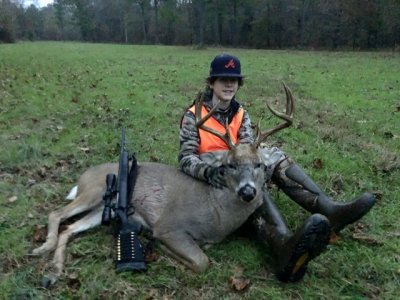
2020: My buck from an A.M. hunt during rut from our largest plot.
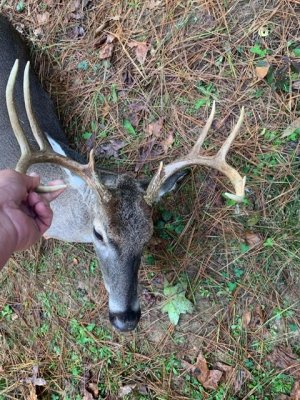
2021: 1st buck for a a friends son who had never killed a buck from our lower plot.
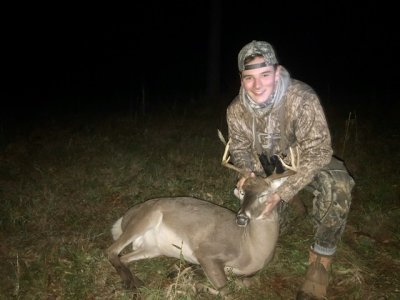
2012: Grandson’s 1st buck

2013: Nephews 1st buck from same plot as grandson’s 1st buck.

2014: Grandson’s 2nd buck from same plot as previous 2 pics. 4.5 yr old buck chasing doe into plot. I had the blessing of being in the stand with him.

2014: One week later after grandson’s kill, his dad connected in our largest plot in the A.M. Buck came cruising right down middle of plot.

2015: son connects on a late Fecember buck out of same stand that grandson n nephew killed their bucks.

2017: Invited guest given green light to shoot what he wanted. Same plot. Yearling forkie but he was happy.

2018: Grandson connects on another buck from our lower plot.

2020: My buck from an A.M. hunt during rut from our largest plot.

2021: 1st buck for a a friends son who had never killed a buck from our lower plot.

Similar threads
- Replies
- 21
- Views
- 889
- Replies
- 23
- Views
- 1K
